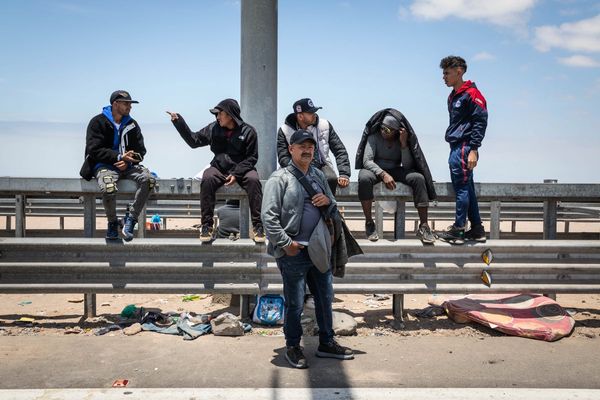
Since the start of the pandemic, communities throughout the UK have rallied to help vulnerable and isolated people. Churches, charities, football clubs, mosques, local councillors and groups of concerned neighbours have distributed food, home-learning technology, emotional support and everything in between.
These initiatives come together under the broad banner of “mutual aid”. This term, coined by anarchist philosopher Peter Kropotkin, explains how the survival and evolution of the human race depend on us working together, as opposed to Darwinian notions of “survival of the fittest”.
COVID brought mutual aid – a concept with a long, radical history in communist and anarchist politics – to the mainstream. But many people delivering mutual aid during the pandemic may have misunderstood its mission. Much of the supportive work was done by existing charities and faith groups, but as direct giving, rather than mutual sharing.
Mutual aid is when people help each other, exchanging goods and services. Doing this does away with the need for handouts from external bodies, such as the government or charities. Instead, mutual aid has been interpreted by state institutions and the mainstream media more as charity work – giving to those in need without seeking to tackle the structural inequality that created the need in the first place.
As welcome as they were to the people who received food, emotional support and other vital services, many of the pandemic initiatives operated very much as a charity, with all the official legislation and bureaucracy that entails, such as background checks and food-hygiene certificates.
One example of more “mutual” practices of mutual aid – fostering sharing over direct giving – that has played an important role for many during the pandemic is the humble community fridge. Addressing both climate change and food insecurity, the fridge is a place where anyone in the community can leave surplus food, and others are free to take food depending on their need. It’s not always an actual fridge – sometimes old phone boxes have been used.
Our ongoing research on community fridges and mutual aid has seen them become more numerous during the pandemic. Hubbub, a community fridge network set up in 2016 with National Lottery Funding, has grown their network from 150 fridges in 2017 to nearly 500 today, adding 250 in the past year.
Fridges are important in marginalised communities, both in areas of deprivation and wealth. They can help reduce the stigma of going to food banks or asking directly for food as they can be accessed at any time and without the need to register with a local authority or charity. One of our interviewees described setting up a community shopping trolley full of food at a local school in Barnsley:
We put a trolley outside the school reception area with all the food in and it’s open and accessible to everybody and anybody in the community. So there’s no stigma attached to it, you don’t actually have to be at that school, you can just come and help yourself.
In the US, community fridges emerged from – and are deeply embedded in – low-income, often black communities.
In Britain, community fridge initiatives have primarily focused on reducing food waste. Kate Raby, a spokeswoman for Hubbub, says that “community fridges are not food banks, they are very much about food waste”. Their value, she argues, is in bringing the community together.
There will be some people there because they hate food waste, there will be other people there because they need the food.
She explains that those who take out the food may offer cookery demonstrations of their favourite dishes to those who put in, or just offer a chat and companionship.

Sharing, not charity
The power of the community fridge is in blurring the boundaries between giver and receiver. Anyone is welcome to give to or take from the fridge, depending on their level of need. Rather than dependency (the haves giving to the have nots), this fosters interdependency within a community and acknowledges that at any point, one’s role can shift from giver to receiver, or vice versa. The act of taking food is as important to the commonality of the fridge as putting food in because it makes sure food isn’t wasted.
Two years into the pandemic and welfare support in the form of furlough and the universal-credit uplift have ended. As such, the need for community support has continued) – and in some cases, increased. The growth of the community fridge network highlights an increasing need for more equitably distributed food, alleviating food waste and hunger at the same time.
The pandemic has made community fridges more visible, and sadly, more needed. Nobody wants them to exist as they currently do – they show that overproduction is leading to enormous amounts of waste, and they represent a failure of state support and the need for a better solution to food inequality.
But the increased attention to mutual aid highlights the value of a political movement that celebrates community solidarity against systemic pressures, be those poverty, pandemics or climate change.
What did you think of this article?
Great | Good | Meh | Weak
Oli Mould receives funding from the Arts and Humanities Research Council for the project 'COVID-19: The effectiveness of mutual-aid groups and their lessons for post-crisis community care' (AH/V013297/1)
Adam Badger receives funding from the Arts and Humanities Research Council for the project 'COVID-19: The effectiveness of mutual-aid groups and their lessons for post-crisis community care' (AH/V013297/1).
Jennifer Cole receives funding from the Arts and Humanities Research Council for the project 'COVID-19: The effectiveness of mutual-aid groups and their lessons for post-crisis community care' (AH/V013297/1). She is affiliated with the Royal United Services Institute for Defence and Security Studies as an Associate Fellow.
Philip Brown receives funding from the Arts and Humanities Research Council for the project 'COVID-19: The effectiveness of mutual-aid groups and their lessons for post-crisis community care' (AH/V013297/1)
This article was originally published on The Conversation. Read the original article.







